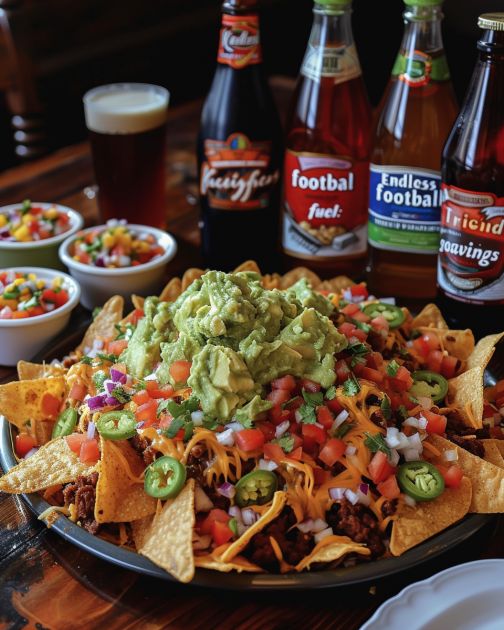For many, the football championship season is a time of joy, camaraderie, and, of course, a lot of delicious snacks. Central to the game-day experience for some is the beloved nacho platter –- a colorful arrangement of chips, cheese, jalapeños, and various other toppings. Much like the strategic play calls of the sport itself, the preparation and storage of these snacks are key to victory against food waste and spoilage.
One common query that arises in the midst of these culinary celebrations is regarding the shelf-life of nachos. While my friend firmly believes that a colossal tray of nachos can retain its freshness over a generous span of twelve days, the reality of food safety and quality suggests otherwise.
Advertisement
Understanding Nacho Freshness and Safety
Nachos, by definition, are a mix of various ingredients that each have their own rate of spoilage. To ensure we’re all on the same page, the typical nacho tray might include tortilla chips, melted cheese, beans, meat, sour cream, guacamole, salsa, and perhaps some diced vegetables. The breakdown of such a delightful mix is a sad, but inevitable process if not consumed in a timely fashion.
1. Tortilla chips are best when crispy and are generally safe to eat for a considerable period if kept in a dry environment. However, once exposed to moisture or covered with toppings, they become soggy and unappealing.
2. Cheese, once melted and then cooled, can rapidly become a breeding ground for bacteria. Freshly grated cheese on nachos should be consumed within a couple of hours at room temperature, and certainly no more than 3-4 days if refrigerated.
3. Any meat on a nacho tray, such as chicken, beef, or pork, is particularly prone to spoilage. Left out, it shouldn't be consumed after 2 hours. In the fridge, leftovers with meat are typically good for 3-4 days.
4. Sour cream and guacamole are highly perishable items. These ingredients can develop bacteria or mold rather quickly. If refrigerated, they should be eaten within 1-2 days.
5. Salsa and diced vegetables can last a bit longer if kept in a cold, sealed container; however, when left in open air, even in the fridge, their quality degrades quickly – they can last about 4-5 days.
It's also worth noting that while refrigerating a large nacho tray may slow down bacterial growth, it won't stop it completely. Consuming any leftover nacho tray stored for more than 4 days, especially one that contains meat, dairy, and vegetables, is risky and can lead to foodborne illness.
Best Practices for Nacho Longevity
Here are some guidelines to follow if you want to enjoy your snack over time without compromising on safety and taste.
1. Store the ingredients separately. Keep your chips, cheese, meat, and fresh toppings in different containers in the fridge.
2. Reheat only the amount you plan to eat immediately, ideally combining the toppings fresh each time.
3. When reheating, ensure that meats reach a safe internal temperature of 165°F to kill any potential bacteria.
4. Invest in air-tight containers for cheese, sour cream, and guacamole to limit their exposure to air and reduce the risk of spoilage.
5. Eat most of your nachos during the game and plan no more than a day or two of leftovers for optimum freshness.
Advertisement
In conclusion, nachos are best enjoyed fresh and are not the ideal candidacy for extended refrigeration. My friend's twelve-day threshold is unfortunately far beyond the safe and palatable bracket for nacho consumption. To fully appreciate the textural contrast and vibrant flavors of this quintessential game-day dish, aim to consume your nachos sooner rather than later, while following proper food safety guidelines. After all, the best offense is a good defense, especially when it comes to the potential adversaries of bacteria and spoilage spoiling the big game's eats!

